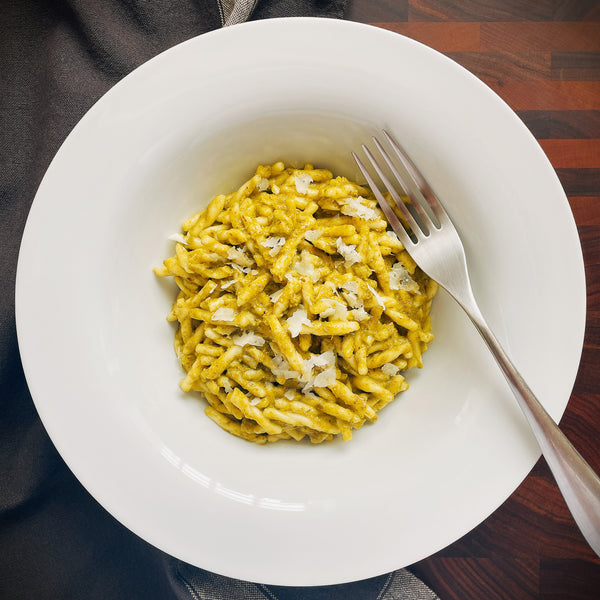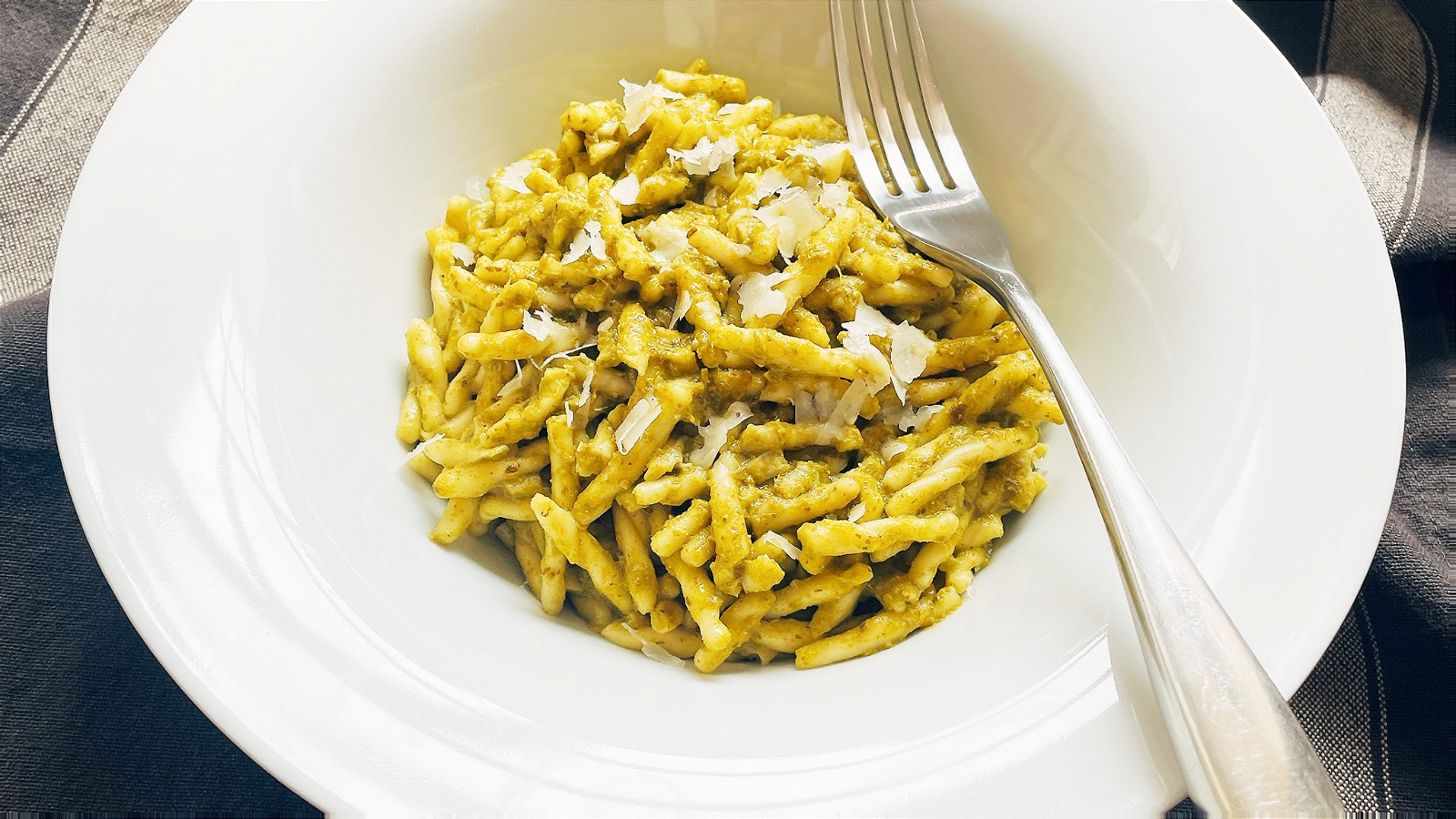Pesto Trofiette

Introduction
Just like pesto, trofiette hails from Liguria in Northern Italy and is one of our all-time favourite pasta shapes to pair with pesto. Traditionally, this quirky little shape would be served with green beans and potatoes, but when we're serving it with top-quality pesto, we like to eat it in its full, unadulterated glory with little more than fresh Parmesan shavings as a garnish.
The name trofiette is based on troph, the Greek word for nourishment, and is basically the shorter, chubbier relative of its more famous cousin, trofie. Whereas it was once a highly regional shape, passed down from mother to daughter, these days it is mass produced in huge quantities with specialist dies and machinery. Pasta di Liguria makes a decent box of trofiette, but for companies to keep their customers coming back for more, they must provide an endlessly reliable product that has a predictable size, shape, and cooking time. That's all very well, but reliability comes at a cost. The result is so formulaic that it lacks any kind of charm, character, or poetry.

If you've ever had the chance to enjoy fresh, handmade trofiette, you'll know there is no going back. To truly fall in love with fresh pasta, you need to learn to not just accept but enthusiastically embrace imperfections. In the same way that every snowflake is unique, every handmade pasta shape will be a little bit different from anything that came before it; and that makes for a diverse, interesting, and enjoyable eat.
When we set about learning how to make trofiette, we watched a dozen YouTube clips of nonnas sitting on the roadside, churning out dozens of these shapes at such blisteringly high speeds that it made our heads spin. They make it look so easy that we were crest-fallen when the inevitable realisation hit that this simple looking shape is actually far harder to perfect than would first meet the eye.

The theory of making trofiette can be taught in 2 minutes flat, but the execution must be learned over many hours of practice, trial, and errors.
Made from nothing more than durum wheat semolina, water, and a little salt, trofiette are made by dragging small nuggets of dough between the palm of your hand and a wooden surface. Pulling the dough diagonally towards you with the right amount of pressure causes it to curl and form its distinctive shape of a twisted middle and tapered ends. The resulting shape is brilliant at holding sauces.


